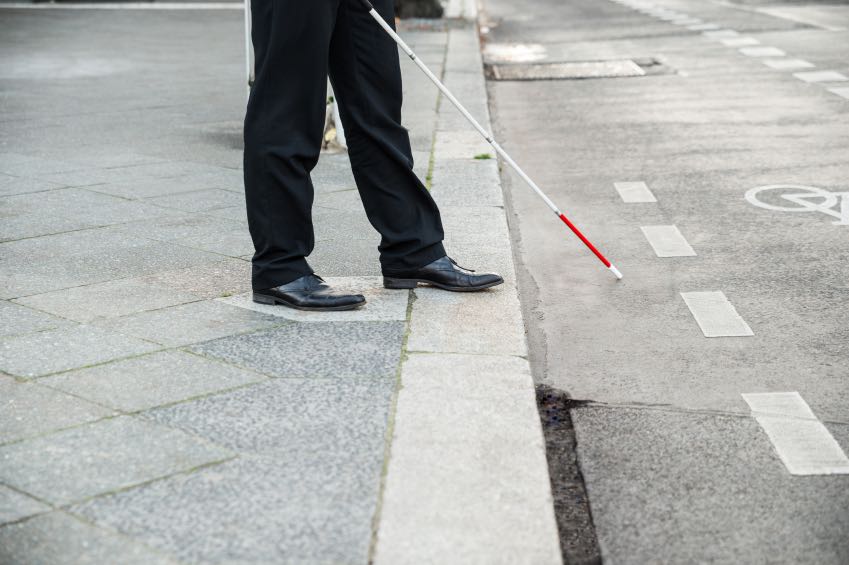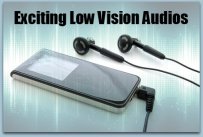The Smart Cane
Technology Advancements Worth Knowing: A Bluetooth-Enabled Smart Cane

Urban areas are becoming increasingly connected, with city-wide Wi-Fi, bus schedules linked to mobile applications, and traffic lights that respond to the flow of traffic. A new smart cane prototype developed by engineering students in France is changing the way that individuals with low visions navigate those crowded, connected cities. The device, called the Handisco stick, uses Bluetooth, GPS, and ultrasonic technologies to deeply connect users with their surroundings. Learn how these new technologies will change the lives of those with low vision.
Who Developed the Handisco Smart Cane?
The idea of a white stick that could receive communication from a fully-connected city comes from Lucie d’Alguerre, a student at the University of Lorraine in Nancy, France. Together with four other engineering students, the team entered a social innovation challenge hosted by Cisco, a global technology and IT company. Following the initial presentation, two Cisco employees began working closely with the student team to further expand and improve the cane. The stick subsequently won a National Prize for Innovation from the French Ministry of Education.
What began as a learning opportunity for young students has become so much more than that. For those with low vision, the Handisco stick will transform their urban experience. It speaks to users through an earpiece and uses a wide variety of technologies to better connect them with their surroundings.
New Technologies Contribute to the Key Features of the Handisco Smart Cane
Stay Connected with a Bluetooth-Enabled Smart Cane
Bluetooth is a type of wireless technology that helps electronic devices communicate across a given area. It is commonly used in computers, mobile phones, and other electronic devices, and its inclusion in the Handisco smart cane is a huge advancement for those with low vision. Other technologies utilized in the smart cane are ultrasonic waves and GPS technology. Key features of the Handisco stick include:
- Sensor System: Traditional white sticks can only alert users to objects it touches. The smart cane, however, uses ultrasonic waves to “see” obstacles in advance. This allows, for example, the user to avoid lampposts and bicycle racks ahead of time.
- GPS Technology: The inclusion of GPS technology within the cane provides local guidance to help users navigate more easily.
- Tags Systems: Tagged sensors at local shops will trigger the cane to communicate store hours and features to you so that you can go inside to shop on a whim. The transmitted information includes what the shop sells, business hours, and even where the entrance is.
- City Connections: One of the best visions for the prototype is the idea that it will be linked to urban objects. This includes providing real-time information and updates in regards to crosswalks, traffic lights, bus systems, construction sites, and even weather conditions.
One bonus feature is the ability to find the cane remotely. You can click a small device, and the cane will respond with a sound that enables you to find it.
Improving Safety and Mobility
Innovative Smart Cane Technologies Help Those with Low Vision
Individuals with low vision are capable of doing anything that others can do. However, walking in a crowded city can be dangerous due to pedestrians, traffic, and construction sites. The Handisco stick is intuitive and easy to use and expressly designed to make the lives of low vision individuals much more mobile, independent, and safe. If you had a white stick capable of telling you directions, how far could you go? This technology-driven device will make the lives of us with low vision much easier while giving us a new understanding about what surrounds us.
Learn More
Are you interested in learning more about Handisco smart cane and how it works? Here is a short video report by Gwen Ifill, co-anchor of the PBS NewsHour:
I hope you are just as excited about the possibilities of these new technologies as I am. As always, visit the Low Vision homepage often for more helpful articles and technology news.
AS A SIDENOTE;
As new technologies are quickly being added to the cane, we will stay on top of them as they arrive. Here's the first. At birmingham city university students have designed a cane that will give facial recognition to the user, it will notify the user when a family member or friend is within a 10 minute window from a bank of photos that have been stored in the system. Do you think anyone has had the idea to combine these two canes yet? We'll be watching for them.

















